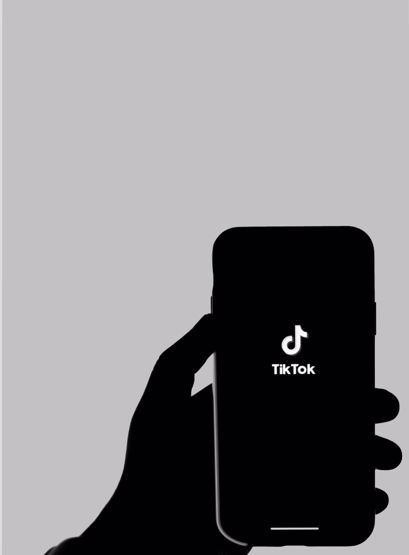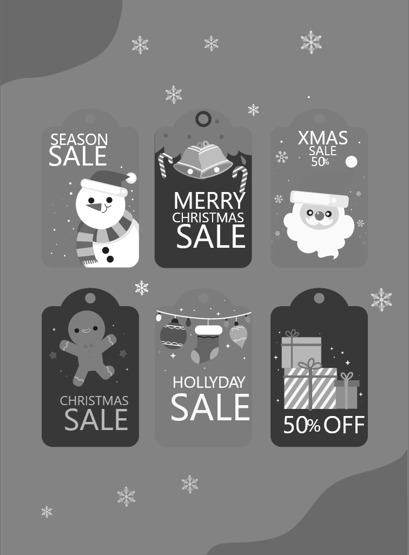Without proper marketing, companies have almost no chance of reaching out to potential customers. This is especially problematic for small businesses and startups. In other words, for those companies who have little to no funds for marketing. How do they compete with big and well-established companies?
Thanks to social media, communicating with customers became a more straightforward and friendly process. This shift in marketing made the free method of attracting customers even more essential: Word of Mouth Marketing (WoMM).
What is Word of Mouth Marketing?
Word of Mouth Marketing is a form of marketing strategy to incentivize your customers to spread the word about your company. For example, when you’re making a special offer, friends tend to tell each other about it. Or, when you’re creating a unique product and cour customer service is at its height, clients have the desire to tell others about their great experience.
In a world where we have so many ads that 86% of our population has developed ad blindness, WoMM is the most reliable and effective way to attract loyal customers. What’s more, this strategy costs little to nothing to the company. That’s why it is the best choice for startups to spread the word about their company. It’s true that instead of time, this model requires a lot of effort, but once you look at the following stats, you’ll be reassured to give it a shot yourself:
92% of people trust the recommendations of their friends and acquaintances more than they trust ads;
88% trust customer reviews with the same amount as they trust friends;
74% of customers state that a recommendation has the biggest impact on their buying decision.
Despite these amazing statistics, only 33% of companies work on word of mouth marketing. You may assume that having people talk about you is a natural process, but considering marketers’ job descriptions, they sure have some tricks to incentivize people to do so.
Before we discuss the techniques for WoMM, you first need to understand one essential prerequisite:
To have people talk [positively] about your company, you need to have a good product. Otherwise, all your efforts will be in vain.
And, customer service is just as important as the quality of your product. Remember, clients seldom talk about the experiences they expected in any case.
Now, let’s discuss some techniques that will help make your startup more appealing.
Stages of word of mouth marketing
WoMM is not focused on attaining fans and subscribers nor on selling a specific product. It’s more about establishing and keeping a good relationship with customers by inspiring them about the company. Often this long process doesn’t get enough attention even though its impact on success is enormous. There are three e’s in WoMM:
Engage
Customers won’t have the chance to know you if you won’t engage with them. Be direct and friendly in your content. For example, in your Facebook posts. But this isn’t even close to enough. Don’t leave comments without a reply. It’s true that this will take a lot of time, but set aside an hour or half for talking to customers, or assign this task to the marketing team if you can. If you look at big companies’ social media profiles, they always answer their users’ questions and comments. A good example is the Georgian bank TBC. Various companies who receive negative remarks through people’s posts never let it pass and often offer gifts or discounts. This makes your clients feel valued and respected, which incentivizes them to talk about your company.
Equip
You won’t be able to talk to users if you don’t create content. It’s not necessary to only talk about your product or service. Quite the other way around, the more exciting and interactive your content is, the better.
Good examples include funny photos or videos, exciting and timely news, or educational resources. Of course, the content you choose should resemble your brand’s values and functionality. For example, a financial management tool, Kernel continuously produces informative articles about financial management.
You can go a step further and connect with your clients in the real world. A company that benefits from this model ideally is a scooter’s selling company Scoot Scoot. They have weekly practices for learning how to ride a scooter to attract new customers and spike their interest, but they also have meetups with those who bought their scooters in the past where they ride the streets of Tbilisi together. This directly connects with their motto: “Soon we will be the whole country!”.

Empower
Your customers need to feel that their voice is important. You can only achieve that by actually listening to them. Actively empower them to participate in various campaigns, ask them opinions on new versions of your product, and host some fun contests!
An excellent example of empowering customers was Lays’s 2013 campaign “Do us a flavor”. People were asked to send a recipe for a new flavor for Lays’s chips. Results? The company received 3.8 Million queries.
Customer reviews
Remember the statistic about customer reviews? 88% of people trust those just as much as they trust their friends’ feedback. And, to gather reviews, you need a good User Experience.
1. Simplify the process
Add a review box on each of your product pages. Clients must be able to quickly notice it because they’ll rarely start looking for it.
2. Find a good time to ask for it
The most honest and informative reviews are written right after receiving the product or service. Use the so-called Pop-ups where you’ll ask your customers to leave a review once they buy your product.
User-generated content
Give users the initiative to create and spread content about your product. Being seen in the stories and posts of everyday people works better than just on your own. A good way to make this happen is photo/video contests.
Referral programs
Obviously, referral programs deserve a place on this list. This is an offer where existing users bring in new ones for various perks, like discounts. Almost all apps use this model because it directly requires people to talk about your brand.
One of the most successful referral program campaigns was Pinterest’s challenge, “Pin it forward”. Back when the platform had just 300 thousand users, the company’s founder, Ben Silbermann, would have live events with clients to directly communicate with them and get their feedback. That’s when the campaign above started, which incentivized bloggers to create boards on Pinterest and challenge fellow bloggers to do the same. Pinterest was a closed platform then, and you could only register with a referral link. Adding these links to the blog posts enabled Pinterest to go from 300 thousand users to 73 Million.
Also see: How Tiktok managed to attract 800 Million users in two years.
No matter which approach you settle on, in the end, it’s the quality of the product and customer service that determines the success of the efforts. But, without the efforts, there won’t be anything to determine. So, get out there and daze your clients!




What is Word of Mouth Marketing And How To Apply it
20 November 2020Without proper marketing, companies have almost no chance of reaching out to potential customers. This is especially problematic for small businesses and startups. In other words, for those companies who have little to no funds for marketing. How do they compete with big and well-established companies?
Thanks to social media, communicating with customers became a more straightforward and friendly process. This shift in marketing made the free method of attracting customers even more essential: Word of Mouth Marketing (WoMM).
What is Word of Mouth Marketing?
Word of Mouth Marketing is a form of marketing strategy to incentivize your customers to spread the word about your company. For example, when you’re making a special offer, friends tend to tell each other about it. Or, when you’re creating a unique product and cour customer service is at its height, clients have the desire to tell others about their great experience.
In a world where we have so many ads that 86% of our population has developed ad blindness, WoMM is the most reliable and effective way to attract loyal customers. What’s more, this strategy costs little to nothing to the company. That’s why it is the best choice for startups to spread the word about their company. It’s true that instead of time, this model requires a lot of effort, but once you look at the following stats, you’ll be reassured to give it a shot yourself:
92% of people trust the recommendations of their friends and acquaintances more than they trust ads;
88% trust customer reviews with the same amount as they trust friends;
74% of customers state that a recommendation has the biggest impact on their buying decision.
Despite these amazing statistics, only 33% of companies work on word of mouth marketing. You may assume that having people talk about you is a natural process, but considering marketers’ job descriptions, they sure have some tricks to incentivize people to do so.
Before we discuss the techniques for WoMM, you first need to understand one essential prerequisite:
To have people talk [positively] about your company, you need to have a good product. Otherwise, all your efforts will be in vain.
And, customer service is just as important as the quality of your product. Remember, clients seldom talk about the experiences they expected in any case.
Now, let’s discuss some techniques that will help make your startup more appealing.
Stages of word of mouth marketing
WoMM is not focused on attaining fans and subscribers nor on selling a specific product. It’s more about establishing and keeping a good relationship with customers by inspiring them about the company. Often this long process doesn’t get enough attention even though its impact on success is enormous. There are three e’s in WoMM:
Engage
Customers won’t have the chance to know you if you won’t engage with them. Be direct and friendly in your content. For example, in your Facebook posts. But this isn’t even close to enough. Don’t leave comments without a reply. It’s true that this will take a lot of time, but set aside an hour or half for talking to customers, or assign this task to the marketing team if you can. If you look at big companies’ social media profiles, they always answer their users’ questions and comments. A good example is the Georgian bank TBC. Various companies who receive negative remarks through people’s posts never let it pass and often offer gifts or discounts. This makes your clients feel valued and respected, which incentivizes them to talk about your company.
Equip
You won’t be able to talk to users if you don’t create content. It’s not necessary to only talk about your product or service. Quite the other way around, the more exciting and interactive your content is, the better.
Good examples include funny photos or videos, exciting and timely news, or educational resources. Of course, the content you choose should resemble your brand’s values and functionality. For example, a financial management tool, Kernel continuously produces informative articles about financial management.
You can go a step further and connect with your clients in the real world. A company that benefits from this model ideally is a scooter’s selling company Scoot Scoot. They have weekly practices for learning how to ride a scooter to attract new customers and spike their interest, but they also have meetups with those who bought their scooters in the past where they ride the streets of Tbilisi together. This directly connects with their motto: “Soon we will be the whole country!”.
Empower
Your customers need to feel that their voice is important. You can only achieve that by actually listening to them. Actively empower them to participate in various campaigns, ask them opinions on new versions of your product, and host some fun contests!
An excellent example of empowering customers was Lays’s 2013 campaign “Do us a flavor”. People were asked to send a recipe for a new flavor for Lays’s chips. Results? The company received 3.8 Million queries.
Customer reviews
Remember the statistic about customer reviews? 88% of people trust those just as much as they trust their friends’ feedback. And, to gather reviews, you need a good User Experience.
1. Simplify the process
Add a review box on each of your product pages. Clients must be able to quickly notice it because they’ll rarely start looking for it.
2. Find a good time to ask for it
The most honest and informative reviews are written right after receiving the product or service. Use the so-called Pop-ups where you’ll ask your customers to leave a review once they buy your product.
User-generated content
Give users the initiative to create and spread content about your product. Being seen in the stories and posts of everyday people works better than just on your own. A good way to make this happen is photo/video contests.
Referral programs
Obviously, referral programs deserve a place on this list. This is an offer where existing users bring in new ones for various perks, like discounts. Almost all apps use this model because it directly requires people to talk about your brand.
One of the most successful referral program campaigns was Pinterest’s challenge, “Pin it forward”. Back when the platform had just 300 thousand users, the company’s founder, Ben Silbermann, would have live events with clients to directly communicate with them and get their feedback. That’s when the campaign above started, which incentivized bloggers to create boards on Pinterest and challenge fellow bloggers to do the same. Pinterest was a closed platform then, and you could only register with a referral link. Adding these links to the blog posts enabled Pinterest to go from 300 thousand users to 73 Million.
Also see: How Tiktok managed to attract 800 Million users in two years.
No matter which approach you settle on, in the end, it’s the quality of the product and customer service that determines the success of the efforts. But, without the efforts, there won’t be anything to determine. So, get out there and daze your clients!